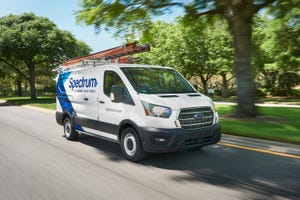
DALLAS -- 5G North America -- You know what? It's difficult not to get a bit jaded after you've been to a few conferences dedicated to the next generation of wireless technology. With all the wild promises and predictions spewing from keynotes and sessions, it is hard not to feel that -- to use a delightful American colloquialism -- people are blowing smoke up your butt.
Particularly as the first likely application for 5G will be useful but distinctly boring. In 2017-18, pre-standard 5G radios will (probably) arrive for operators that want to deliver 1Gbit/s fiber-like services to the home over the air.
In the US, Verizon Communications Inc. (NYSE: VZ) is the loudest champion of this approach, as it thinks that a wireless approach will be cheaper than digging up the street. This could be true, but backhaul and small cell zoning rights could all add up, too.
Verizon's fixed wireless specification is very much an evolution of LTE. It uses a wideband-OFDM radio scheme, twinned with 10MHz radio channels that can be combined to deliver 800MHz in the high-band 28GHz range.
What is undeniable is that the fixed route is the easiest way to tell consumers you've delivered 5G. Going mobile on 5G is so much harder, and people at the show variously described it to me as "an interesting test case," as well as a way to not have to deal with the large range of use case options in a 5G core architecture.
We know what fixed 5G is right now: A ramped-up version of the old LMDS system with dramatically better antenna technology giving it muscle.
So the next time someone tells you that 5G will deliver the next industrial revolution, you might want to remind them, baby steps, first, kid, baby steps...
— Dan Jones, Mobile Editor, Light Reading
About the Author(s)
You May Also Like




_International_Software_Products.jpeg?width=300&auto=webp&quality=80&disable=upscale)







